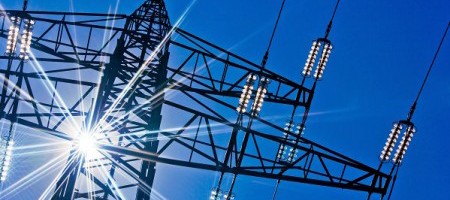Electricity generation and distribution infrastructure in the Western United States must be “climate-proofed” to diminish the risk of future power shortages, according to research by two Arizona State University engineers.
Expected increases in extreme heat and drought events will bring changes in precipitation, air and water temperatures, air density and humidity, write Matthew Bartos and Mikhail Chester in the current issue of the research journal Nature Climate Change.
The authors say the changing conditions could significantly constrain the energy-generation capacity of power plants – unless steps are taken to upgrade systems and technologies to withstand the effects of a generally hotter and drier climate.
Bartos is a research scientist and Chester is an assistant professor in the School of Sustainable Engineering and the Built Environment, one of ASU’s Ira A. Fulton Schools of Engineering. Chester also has an appointment in the School of Sustainability in ASU’s Julie Ann Wrigley Global Institute of Sustainability.
In their article “Impacts of climate change on electric power supply in the Western United States,” they report that power stations are particularly vulnerable to adverse climatic conditions predicted to occur within the next half-century.
“In their development plans, power providers are not taking into account climate-change impacts,” Bartos said. “They are likely overestimating their ability to meet future electricity needs.”
The West is expected to see greater energy demand due to population growth and higher temperatures. Bartos and Chester say power plants must strengthen transmission capacity and enact conservation strategies if they are to remain capable of reliably supplying power to the region as conditions change.
Power providers also should invest in more resilient renewable energy sources and consider local climatic constraints when selecting sites for new generation facilities, the authors said.
“Diverse arrays of energy-generation technologies are used by the West’s power grid. We are looking at five technologies: hydroelectric, steam, wind and combustion turbines, and photovoltiacs,” Chester said.
“We’re finding that some power-generation technologies can be more climate-resilient than others. Renewable energy sources are generally less susceptible to climate change impacts. So more use of renewable sources may contribute to a better climate-proofed power infrastructure,” he said.
Reference(s):
Publication: Matthew D. Bartos, Mikhail V. Chester. Impacts of climate change on electric power supply in the Western United States. Nature Climate Change, 2015
Story: U.S. West’s power grid must be prepared for effects of climate change | Arizona State University — May 18, 2015












Comments